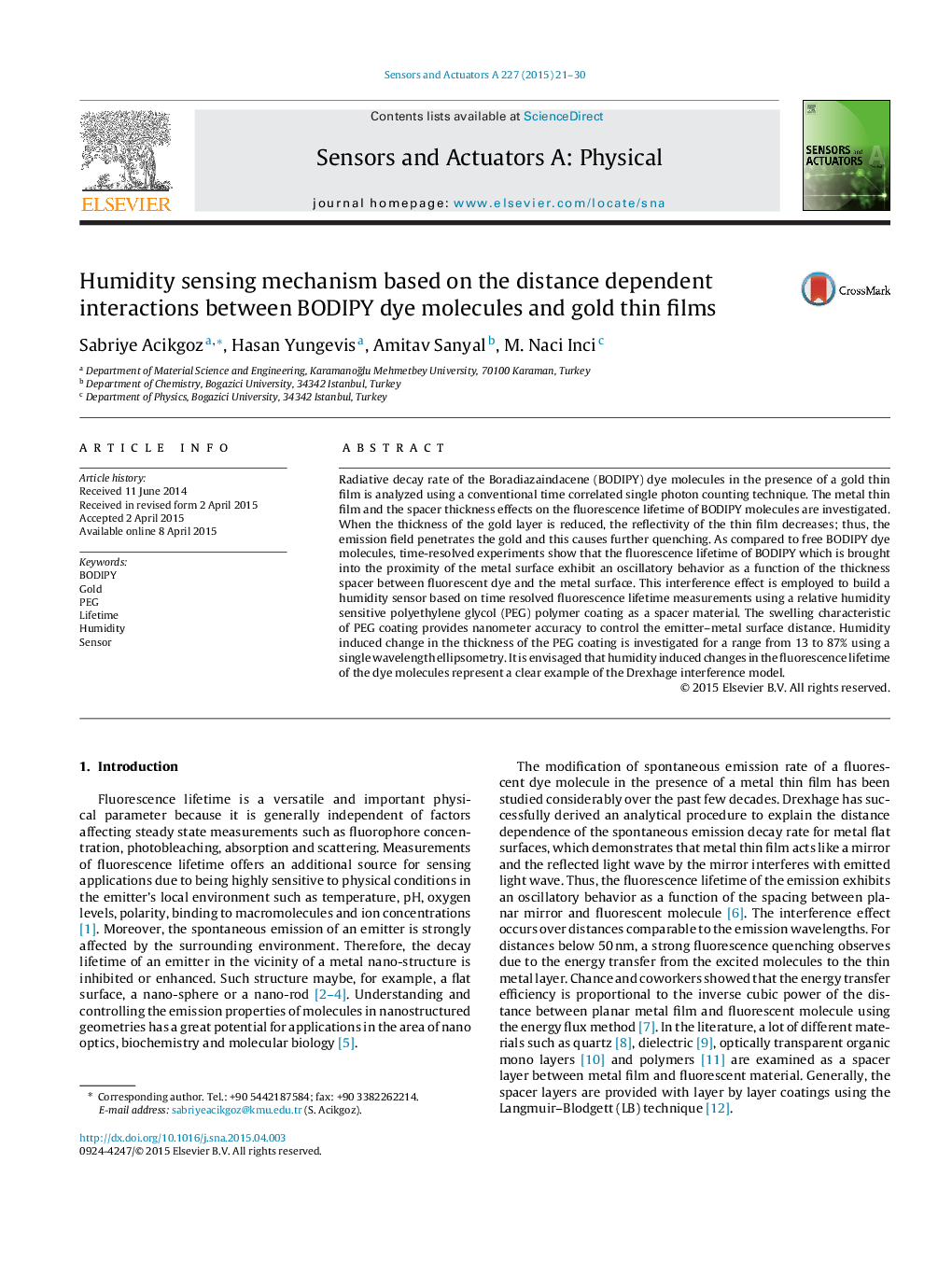| Article ID | Journal | Published Year | Pages | File Type |
|---|---|---|---|---|
| 736197 | Sensors and Actuators A: Physical | 2015 | 10 Pages |
•How fluorescence lifetime of a BODIPY dye molecule is modified by the presence of a reflecting metal surface.•The interference effect is employed to build a humidity sensor based on fluorescence lifetime measurements using PEG coating as a spacer material.•Humidity induced change in the thickness of the PEG coating is investigated for a range from 13 to 87% using a single wavelength ellipsometry.•A practical motivation to investigate fluorescence lifetime enhanced sensors with a simple production and operation mechanism for humidity control.
Radiative decay rate of the Boradiazaindacene (BODIPY) dye molecules in the presence of a gold thin film is analyzed using a conventional time correlated single photon counting technique. The metal thin film and the spacer thickness effects on the fluorescence lifetime of BODIPY molecules are investigated. When the thickness of the gold layer is reduced, the reflectivity of the thin film decreases; thus, the emission field penetrates the gold and this causes further quenching. As compared to free BODIPY dye molecules, time-resolved experiments show that the fluorescence lifetime of BODIPY which is brought into the proximity of the metal surface exhibit an oscillatory behavior as a function of the thickness spacer between fluorescent dye and the metal surface. This interference effect is employed to build a humidity sensor based on time resolved fluorescence lifetime measurements using a relative humidity sensitive polyethylene glycol (PEG) polymer coating as a spacer material. The swelling characteristic of PEG coating provides nanometer accuracy to control the emitter–metal surface distance. Humidity induced change in the thickness of the PEG coating is investigated for a range from 13 to 87% using a single wavelength ellipsometry. It is envisaged that humidity induced changes in the fluorescence lifetime of the dye molecules represent a clear example of the Drexhage interference model.
